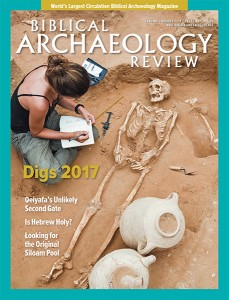Who coined the term “Biblical archaeology”?
Answer: William Foxwell Albright

Considered by many as one of the last great “Orientalists”—an expert in several disciplines related to the study of the ancient Near East—William Foxwell Albright (1891–1971) was born in Coquimbo, Chile, to American Methodist missionary parents. He obtained his Ph.D. in Semitic Languages from Johns Hopkins University in 1916, which led him to the Holy Land. After years in Jerusalem, during which he served as a fellow—and then director—of the American Schools of Oriental Research (ASOR), Albright came back to the U.S. and Johns Hopkins in 1929 as the W.W. Spence Professor of Semitic Languages, a position he held until his retirement in 1958.
Throughout his career, Albright was continually at the forefront of Near Eastern studies and Biblical archaeology. He excavated at several sites in the Near East, including Tell Beit Mirsim (identified as Biblical Debir by Albright, but this identification has since been questioned), Beth-zur, Beitin (Biblical Bethel) and Petra in Jordan. From his excavations, especially at Tell Beit Mirsim, Albright transformed the study of Palestinian pottery through his application of the pioneering Egyptologist Sir Flinders Petrie’s sequencing principles. After more than 70 years, Albright’s pottery chronology is largely unchanged.1
Already a library member? Log in here.
Institution user? Log in with your IP address.

